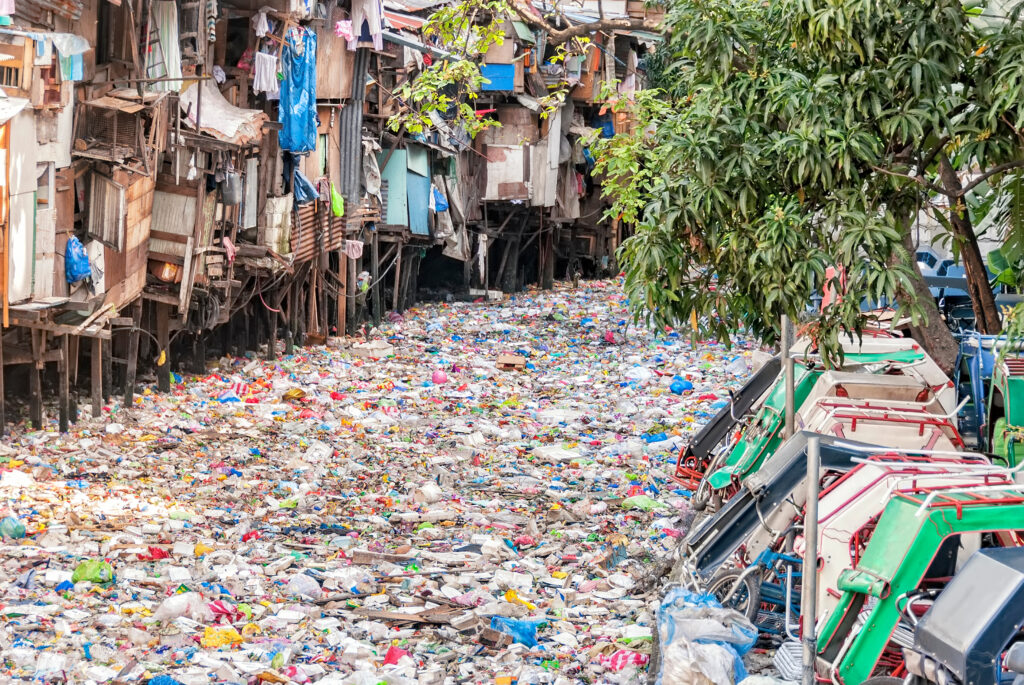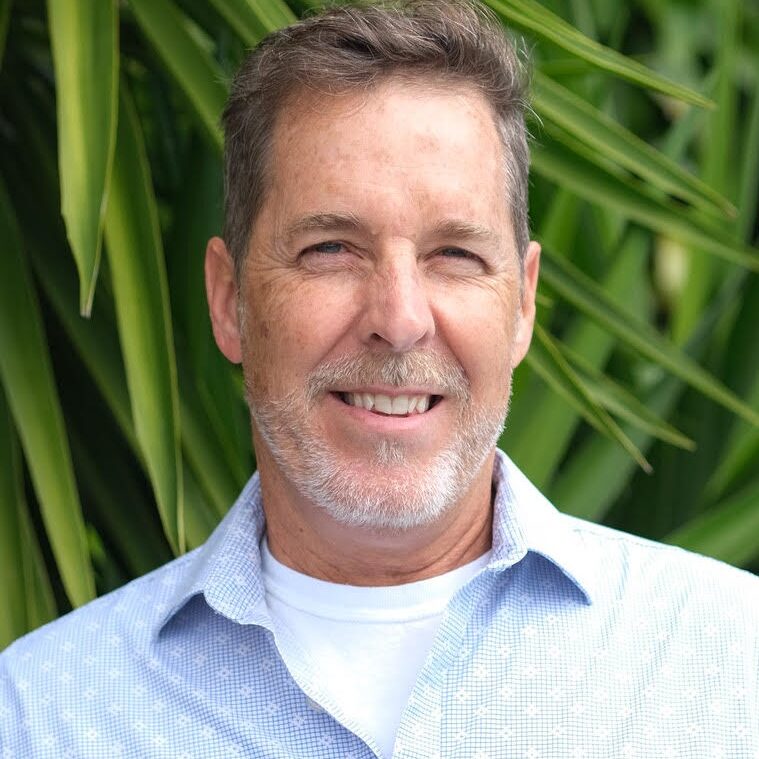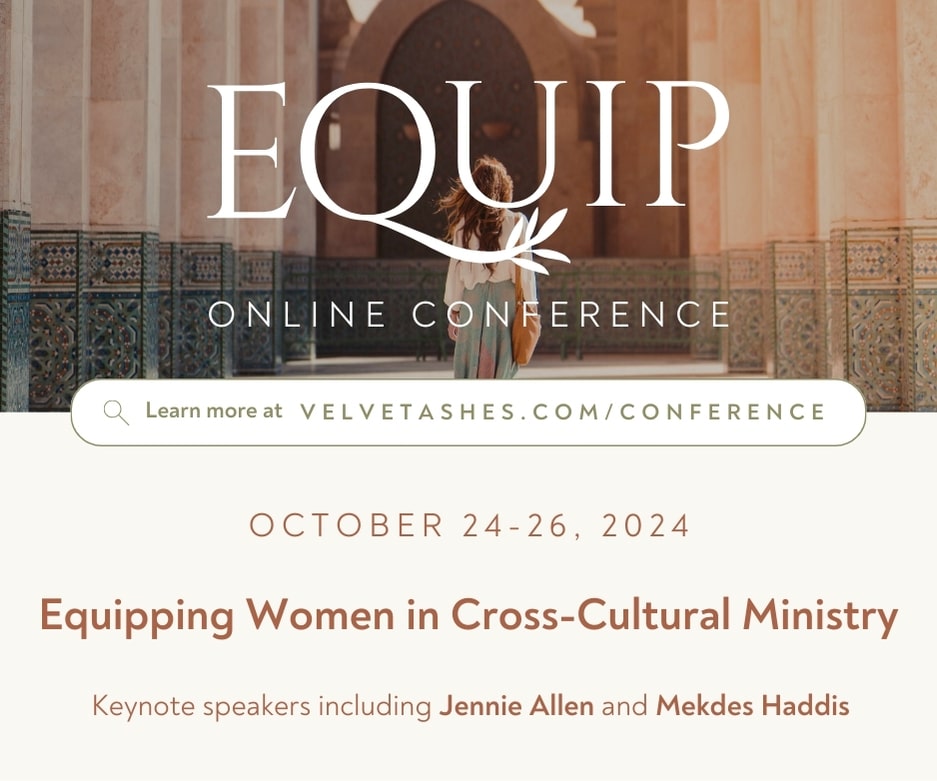EMQ » April–June 2023 » Volume 59 Issue 2

Summary: Most pastors, evangelists and missionaries have been trained to share about Jesus’s atoning sacrifice on the cross, the cleansing of every believer from their sin, and the imputed righteousness of Christ on the believer. But what about the transformational work of the Holy Spirit on all aspects of life? Shouldn’t a whole gospel message include a green gospel that leads to a believer’s changed relationship with God’s creation?
By Erik Hyatt
Remember those cool gospel friendship bracelets you might have made at youth group, church retreat, or on a short-term mission trip to Mexico? Each color bead or yarn strand on the bracelet represented a part of the gospel message. Black was for our sin before God. Red stood for the atoning blood of Christ. White indicated the cleansing of our sin. Green pointed to growing new life in Christ. And gold stood for eternal life in heaven.
It was a nice evangelism tool if you could get someone to listen to your explanation of each bead. Every color is certainly vital to the whole gospel message. And it’s sequential. One must first confess the truth of the black bead before seeing the need for the rest of the gospel as good news. At the apex of the gospel message is the red and white message. These represent the once-for-all atoning sacrifice of Jesus Christ on the cross, the cleansing of every believer from their sin, and the imputed righteousness of Christ on the believer (Ephesians 1:7; Hebrews 9:14; Revelation 5:9).
Indeed, as the author of Leviticus and Hebrews notes, “without the shedding of blood there is no forgiveness of sins” (Leviticus 17:11; Hebrews 9:22). And the Apostle Paul declared, “For our sake he made him to be sin who knew no sin, so that in him we might become the righteousness of God” (2 Corinthians 5:21). This is the part of the gospel message that most American pastors, evangelists, and missionaries have been trained to contextualize and proclaim in the language and cultures of all peoples throughout the world. And rightly so!
But what about the green part of the gospel – the effects of the resurrection of Christ and the work of the Holy Spirit on all aspects of life (1 Corinthians 15:17; 2 Corinthians 5:17)?
Considering the Green Gospel
Most evangelical Christians would agree that the whole gospel should address the whole person (body and soul) with a holistic blessing on the whole world. In fact, this is exactly what evangelical Christians around the world affirmed in our generation as written in the 1974 Lausanne Covenant[1] and again in the 2010 Cape Town Commitment.[2]
But shouldn’t this whole gospel message lead us to address more than just a change in moral and social behavior? Shouldn’t it also include a change in the believer’s view of his work and his treatment of God’s creation (Genesis 2:15; Psalm 24:1) – a green gospel? Environmental stewardship, while not addressed in the 1974 Lausanne Covenant, appears prominently in the 2010 Cape Town Commitment.[3] So why is it that in regions of the world where the gospel seems to have spread the fastest in our generation (Sub-Saharan Africa, India, and China in particular), God’s green earth has suffered the worst degradation leading to the preventable suffering and deaths of millions?
The Lancet Commission on Pollution and Human Health found that in 2015 pollution resulted in over 9 million deaths worldwide. This represents three times more deaths than AIDS, tuberculosis, and malaria combined, and it corresponds to ten times more deaths than all forms of violence and conflict.[4]
Today in Kenya 85.52% of the total population claims to be Christian. Yet Kenya still suffers from preventable flash floods, soil erosion, polluted and shrinking water sources, crop failures, food shortages, human disease, and death. Some might blame climate change. But much of Kenya’s environmental crisis is due to human neglect and mistreatment of God’s creation.
Deforested hills cause flash floods, soil erosion, and lack of water retention. Add decades of unmitigated pollution and you get failing crops, poisoned and shrinking water sources, declining wildlife, droughts, food shortage, and human death.
Meanwhile, churches in Kenya and other parts of Sub-Saharan Africa are packed with Christian worshipers every Sunday and throughout the week. Seminars and prayer meetings abound. But God’s creation remains broken, neglected, and abused.
Making the Green Gospel Connection
My first encounter with environmental abuse came on my first mission trip to the Philippines in the 1980s. I saw the river running through metro Manila filled with so much garbage that it was reduced to a trickling creek. We then travelled south and boarded outrigger canoes to remote islands to share the gospel message in small villages with puppets and mime skits.
As our team travelled across the crystal-clear Philippine Sea we were amazed at the colorful coral and sea life we could see for about twenty feet below the surface. Our national hosts brought a nice lunch for us to eat on the long boat ride. Once we all ate, our host gathered all of our plastic cups and wrappings and was about to throw it all into the ocean.
Our American team screamed in unison, “Please stop!” Our host seemed shocked and asked, “Why?” None of us had an answer other than, “It’s just not right.” So we kept the bag of garbage until we could leave it on the island, never stopping to ask what happened to it on the island. There was no weekly garbage collection service. It would likely be buried or burned on the Island or thrown into that beautiful ocean like everyone else did.
Later, as a global outreach pastor in two different urban-American mega churches, I travelled to some of the poorest cities and rural areas of the world (India, China, and several countries in Africa). I took short-term ministry teams to serve and encourage missionaries, and to teach local pastors things I learned in seminary. Unfortunately, none of my teaching addressed a believer’s relationship to creation as a way of honoring our Creator and Savior, Jesus Christ. Like many others I had accepted that this is the way it is, and I wasn’t going to change it – especially not in a weekend seminar.
It was a second-generation missionary in Kenya, Craig Sorley, who helped me to reflect on how the gospel might address the terrible environmental destruction that I had observed in many countries – especially in countries considered reached by missiological standards. In 2004, Craig started a ministry called Care of Creation Kenya. (It is now called Creation Stewards International.)
After one of his early training seminars, a Kenyan pastor stood up and spoke for the group saying, “We repent! We have not cared for God’s creation as he intended.” In fact, the Nobel Prize winner and assistant minister for environment in Kenya, Dr. Wangari Maathai,[5] attended two of Craig’s trainings in 2004. After the first training Dr. Maathai told Craig, “I didn’t realize how much the Bible had to say about the environment!”
Since the 1970s wave of concern about environmental crises around the world, global warming (widely known as climate change) has become one of the Western world’s greatest concerns. Governments and secular NGO’s have spent large sums of money and employ many people to address these environmental issues around the world.
However, only a fraction of the global Christian church seems to be as active and involved in discipling believers to care for God’s creation. Meanwhile, environmental destruction and neglect continue to persist due to wars, traditional cultural beliefs/practices, and perhaps the way the gospel was shared by missionaries.
Since I graduated from seminary in 1995, missions strategies have usually concentrated on identifying people without adequate access to the gospel, and finding the most effective ways to share the gospel with as many of them as possible. More recently many mission agencies have focused on so called church planting movements to rapidly achieve this goal with many missionaries receiving training to facilitate such movements.
The methods of outreach missionaries learn typically emphasize verbal proclamation of biblical propositions resulting in cognitive assent and at least surface level changes in moral or social behavior of new believers. However, these appear to have little to no transformative effect on the physical, environmental, and economic health of the recipient cultures.
Unless missionaries can make the green connection in the gospel message clearer, we will continue to see increases in environmental degradation, poverty, sickness, and death among the very peoples we hope to reach with the gospel. Why should the UN and secular NGOs take the lead on these issues? Shouldn’t the children of God be the first to address the groans of creation (Romans 8:22)?

Creation Groans Loudest in Africa and in the 10/40 Window
A couple of Wycliffe UK missionaries were sent to follow up on unreached people group in Nigeria to see if a recently completed Bible translation in their language was being used.[6] What they discovered was that most of the people in this farming community had no interest in it.
When they asked why, the people told them, “We don’t see how this book applies to our life of farming.” The missionaries contacted Creation Stewards International (CSI) for some of our written training material. They used some of our material to create Wycliffe’s first ever Faith and Farming program in Nigeria. Could other unreached agrarian or pastoralist societies in Africa and across the 10/40 window benefit from gospel-centered programs like this?
The Food and Agricultural Organization (FAO) study in 2015 revealed that the majority of the world’s farms are small and located among the poor and least reached people. Approximately 570 million farms feed the world today.[7] 475 million of them are less than 2 hectares (about 5 acres). And 500 million of these farms are owned by one person, household, or family.
Specifically, in lower-income level countries of East Asia (excluding China), the Pacific, South Asia, and Sub-Saharan Africa, 70%–80% of farms are smaller than 2 hectares (about 5 acres) and operate about 30%–40% of the land. In fact, 24% of the world’s farms operate in India, and another 35% of all farms exist in China!
The study also shows that environmental neglect and abuse in Africa and Asia contributes to soil erosion, dirty and depleting water sources, failed crops, and diminishing wildlife. Wouldn’t these be indicators that our global mission strategy and missionary training should include environmental stewardship?
What if churches and mission agencies trained more missionaries to use creation care as a basis for gospel declaration (evangelism) and church planting (discipleship) among unreached agriculture-based peoples in the 10/40 window? What if this green gospel focus also helped train reached agrarian peoples (like those in Sub-Saharan Africa) to become better gospel witnesses among the unreached in their regions and beyond? How could this be done?

Training Green Gospel Ministers
Thankfully, there are some good environmental-focused Christian ministries based in the US including ECHO, Plant with Purpose, A Rocha, and Creation Stewards International. Many are connected through the Evangelical Environmental Network[8] working to educate, inspire, and mobilize the global church to better care for God’s creation. Some American evangelical churches are strongly supporting and advocating these ministries. But why so few?
Unfortunately, environmental stewardship is not a common topic of concern amongst numerous evangelical Christian denominations. One possible reason could be the fear of association with secular and political environmentalism, or climate change alarmism. Many have legitimate concerns that the solutions currently being promoted to counter global climate change could exact more harm to national economies and even to the environment itself.[9]
Another reason could be a concern that an emphasis on temporary environmental issues might reduce attention on eternal souls. This could stem from an eschatological view, commonly held among many evangelical church leaders, that this world will ultimately be destroyed after Christ’s return and replaced by a new heavens and new earth (Revelation 21:1).
But does that eschatology absolve Christians from God’s original task given to man in the first garden, prior to his fall into sin (Genesis 2:15)? Shouldn’t there be something akin to the Hippocratic oath for medical professionals (“First, do no harm”) also guiding the Christian’s relationship with God’s creation? After all, we don’t mistreat our own bodies simply because it is slowly decaying, do we? And what if a biblical, green gospel connection could open hearts and minds of agrarian-society peoples to the gospel of Jesus Christ, Creator and Savior of all (Colossians 1:15–20)?
CSI is one of a few evangelical Christian ministries that seeks to present a holistic gospel message among agrarian societies, starting with a focus on biblical revelation from Genesis to Revelation. We start with the biblical revelation that our Creator was the first farmer (Genesis 2:8), and the first task given to humans (created in his image) was to steward God’s garden (Genesis 2:15).
Man’s fall into sin broke our relationships with God, each other, and with his creation (Genesis 3). Redemption and reconciliation with our Creator God required a sacrifice (Genesis 3:21), pointing to our need for a once-for-all sacrifice provided by the Creator himself (Colossians 1:15–20). Working the ground is more difficult due to the effects of our sin, but not impossible (Genesis 3:17–19). And a restored relationship with God should change the way we view and treat his creation – for his glory and care for fellow man (Genesis 4 – Cain and Abel).
We connect these biblical teachings to farming and environmental stewardship through a demonstration farm in Kijabe, Kenya, growing common crops in two plots, side-by-side. One plot is grown according to traditional farming practices and the other according to the standards of Farming God’s Way (FGW, farming-gods-way.org).
With the motivation of biblical revelation and a desire to honor our Creator, we teach a biblically-based version of what’s known as regenerative agriculture.[10] We show people how to restore depleted soils through minimal tillage and using a mulch cover.
These practices reduce the need for chemical inputs, help stop soil erosion, better retain ground moisture, restores organic matter in the soil, and actually reduce carbon emissions into the atmosphere. The plots grown in the FGW manner have consistently produced double and triple the yields compared to the traditional plot. And the fruit is typically larger in size
We address other important pieces of God’s eco-system that he has designed for us to steward for his glory and to help humans flourish like protecting clean water sources, birds and bees for cross-pollination, other animals that are a natural solution to bug and rodent control. When these are not stewarded properly, it causes a chain reaction of negative effects that essentially translates into food shortages, famine, disease, and preventable death.
There has never been a better time for the evangelical Christian church, seminaries, and mission agencies to train God’s people in all places to be creation stewards with a biblical, Christ-exalting eco-theology. Despite the fall of man into sin and its negative effects on creation, God is still the creator and owner of all (Psalm 24:1).
And the task given to man in the first garden – to work it and keep it – has not changed (Genesis 2:15). We need to preach and teach the whole gospel with all of its colors. And when it comes to the green portion of the gospel, let’s make sure pastors, evangelists, missionaries, and church members see the vital connection to loving God and neighbor through our treatment of his creation.

Erik Hyatt (erik@creationstewardsint.org) is the international director for Creation Stewards International (CSI). He has an M.Div. in world ministry from Western Seminary (Portland, OR), and a doctorate in missiology from Fuller Seminary (California). He was a YWAM missionary in Asia. He then served in the US as a missions pastor and church planter ministering in more than 25 countries. He and his wife, Charlotte, have three daughters and live in Florida.
[1] The Lausanne Covenant (1974), https://lausanne.org/content/covenant/lausanne-covenant.
[2] The Lausanne Covenant defined evangelization as “the whole Church taking the whole gospel to the whole world,” http://www.imagochrististudio.org/wp-content/uploads/2017/10/Cape-Town-Commitment-2010-.pdf.
[3] Our biblical mandate in relation to God’s creation is provided in “The Cape Town Confession of Faith” section 7 (a). All human beings are to be stewards of the rich abundance of God’s good creation…
[4] The Lancet, “The Lancet Commission on Pollution and Health” (October 20, 2017), https://www.thelancet.com/commissions/pollution-and-health.
[5] For more biographical information on Dr. Maathai see https://www.nobelprize.org/prizes/peace/2004/maathai/biographical/.
[6] For security reasons, the names and exact location of the Wycliffe missionaries are not given.
[7] Food and Agriculture Organizations of the United Nations, “Global Perspectives Studies,” https://www.fao.org/global-perspectives-studies/en/.
[8] Evangelical Environmental Network, https://creationcare.org/.
[9] Some of the carbon-reducing solutions would destroy the economies of most countries. It can also be argued that solar and wind generating solutions can cause even greater unintended environmental destruction, https://climaterealism.com/2020/04/new-study-climate-solutions-impose-massive-environmental-harm/.
[10] The definition and benefits of regenerative agriculture can found here: https://sustainableamerica.org/blog/what-is-regenerative-agriculture/.
EMQ, Volume 59, Issue 2. Copyright © 2023 by Missio Nexus. All rights reserved. Not to be reproduced or copied in any form without written permission from Missio Nexus. Email: EMQ@MissioNexus.org.






Responses